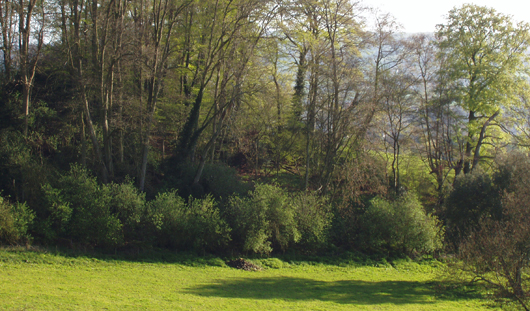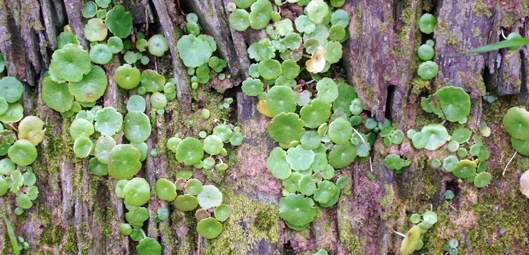UK: Where have all the hunter-gatherers gone?
04.03.10
Plant Talk invited Jennifer Lee from the University of Liverpool to share her knowledge on modern day wild food foraging and its implications for plant conservation.
From the middens that they left behind, we know that hunter-gatherers once foraged across Britain in search of edible leaves, roots, nuts and berries. By Anglo-Saxon times, virgin forest still covered much of the land, and most people continued to rely on foraged produce to some extent(1). As the population steadily increased and gathering slowly gave way to agriculture, the nutritional need for foraged plants declined. The concentration of land in fewer and fewer hands also raised issues as to lawful access and the use of lands that had previously been foraging haunts.

The UK countryside is a rich resource for people who want to harvest wild food.
By the 1700s, agriculture in Britain was transforming into a major industry. Land was drained and hedged in, whilst new techniques improved productivity thereby making farming an increasingly lucrative business. Mortality fell through the 18th and 19th centuries, and, in spite of emigration, the population rose to such an extent that the pressure on the land merely to feed such a large population grew intense. Accompanying the social advancement of the landowners was the urban movement of the small farmer to the factories. The culminating enclosure of the commons irrevocably altered the rural landscape and consequently the foraging practices of adjacent communities. Gathering was no longer a customary right but a privilege.
Today, a visitor to the countryside generally roams across the landscape freely, and yet only occasionally considers gathering wild plants. Foraging no longer evinces quite such an array of complicated needs as it once did. Besides there being no genuine nutritional requirement to supplement the diet with gathered plants, many people have lost the depth of knowledge concerning the location of edible plants and their wide variety of uses.
A comprehensive “Wild Foods Survey”, conducted with the help of the Eden Project, hopes to describe the environment facing the modern forager so that the evolution of foraging from a necessity to a hobby can be explored in greater depth. Those out foraging for plants today are likely to be female, aged between 30 and 59 and very well educated. At least a quarter of the population still claim to pick blackberries and sloes, but outside of these popular categories, fewer individuals forage and those that do tend to gather specific groups of food. Nevertheless, a wide variety of plantstuffs are still gathered, including around 73 recorded items. The most commonly picked items remain the familiar wild berries, elderflowers, nettles, ramsons, chestnuts, hazelnuts and the occasional field mushroom.

Navelwort is a surprisingly good eater.
Most modern foragers gather whilst out walking the dog or rambling and the plants collected often come as an incidental side benefit. However, there is little clear notion among most visitors about what right they have to gather from someone else’s land. The right to roam across a field and the right gather have evolved separately in the law. From the Survey, it appears that many people assume foraging is legally permissible so long as they act responsibly. This is not actually the case, at least in law, as all wild plants have protection from being intentionally uprooted without the permission of the landowner or occupier. From the Survey, it appears that few individuals know who owns the land on which they forage and even fewer state that they had permission to gather. However, the Botanical Society of the British Isles Code Conduct for the Conservation and Enjoyment of Wild Plants(2) gives the general rule that:
Non-commercial gathering of berries, nuts and mushrooms for the table is a traditional use of the countryside and probably does no harm to the plant, providing it is carried out in moderation and the plant is common.
Nevertheless, this general rule is bracketed with the proviso, “so long as no conservation legislation or byelaws apply.” Conservation legislation does now affect numerous species of wild plant and there are an increasing number of byelaws that affect both access and rights to forage. Yet most of those surveyed seemed unaware of the implications of conservation legislation, with only a third aware of the specific laws that apply to plant life. A substantial number of plants are now fully protected against picking, collecting, cutting, uprooting, possession and sale(3). A long list of endangered plants, given as an appendix to the BSBI Code of Conduct(4), does not list any of the most commonly foraged plants, hence they presumably remain safe to pick with the landowner’s permissio